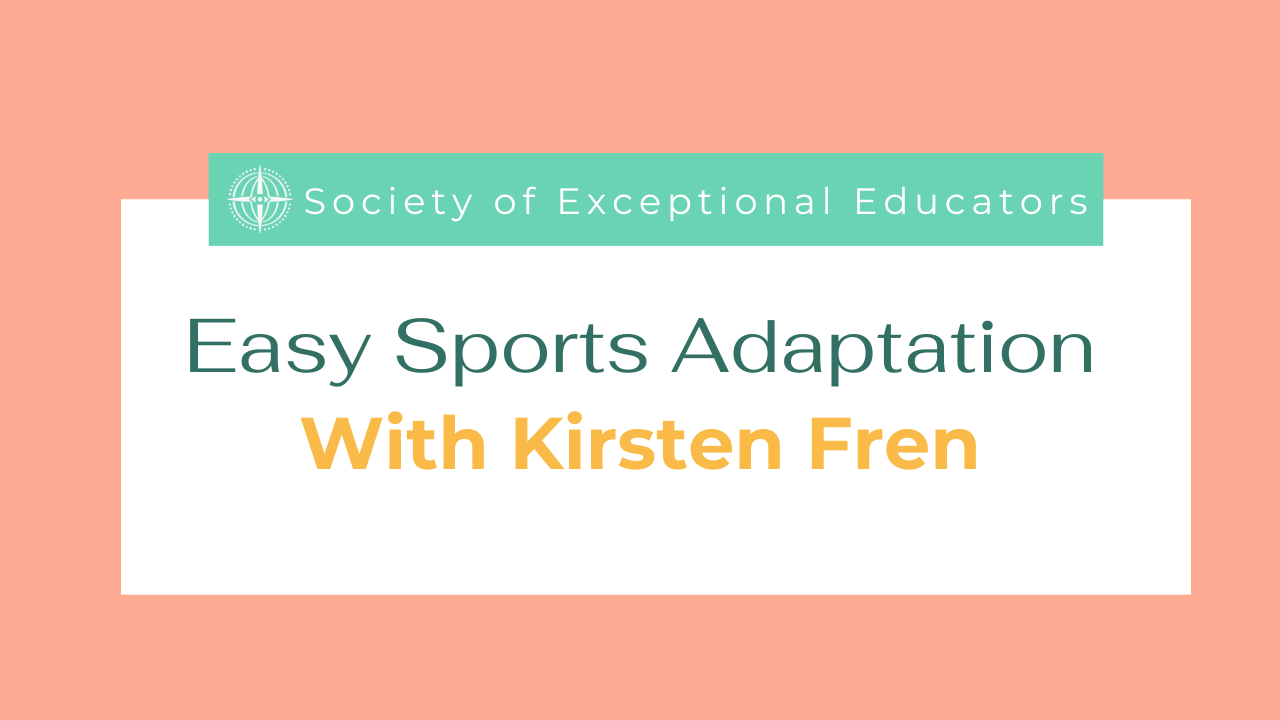
Most educators feel a deep responsibility to make their classrooms more inclusive but often get overwhelmed by the perceived magnitude of changes required. The good news? Even the smallest adjustments can lead to significant impacts on students' learning experiences. This theme was central in a recent podcast episode featuring Kirsten French, a passionate advocate for adaptive sports and the Programs Manager for Sports Adaptations at Camp Spark, under the Northwest Association for Blind Athletes (NWABA).
Kirsten’s journey into adaptive sports began during her Master’s degree when she witnessed firsthand how transformative sports could be for students with visual impairments. In the podcast, she shares how sports serve as a powerful teaching tool and a catalyst for social integration, confidence building, and skill development for these students.
Step-by-Step Adaptations: A Practical Approach
One of the key takeaways from Kirsten's discussion is the importance of taking a step-by-step approach to adaptations. Rather than overhauling entire curriculums, educators can introduce small, manageable changes that make a world of difference. Kirsten emphasizes that feeling stuck can be alleviated by simple, thoughtful adaptations, which can make teaching more accessible without disrupting the overall flow of the classroom.
Understanding the Sports Adaptation Program
Kirsten's Sports Adaptation Program is a comprehensive initiative designed to make physical education more inclusive for students with visual impairments. The program offers:
- Customized Adaptations: Tailored modifications to sports and physical activities that meet the specific needs of visually impaired students.
- Support for Educators: Resources and training for teachers to help them incorporate adaptive methods seamlessly into their existing curriculums.
- Family Engagement: Guidance for parents to support their children's physical activities at home, ensuring continuity and practice beyond the classroom.
These services empower educators and families to create an inclusive environment that nurtures the physical and social development of children with visual impairments.
General Adaptations for Accessibility
Kirsten shared practical adaptations that can be easily implemented to enhance accessibility:
- Verbal Cues: Replace visual instructions with detailed verbal descriptions to guide students through activities.
- Tactile Tools: Utilize tactile aids like raised line drawings or textured materials to help students understand spatial concepts.
- Pre-Class Familiarization: Allow students to explore the environment and equipment before class starts to reduce anxiety and increase participation.
- Peer Support: Engage classmates in supporting their visually impaired peers, fostering an inclusive and collaborative learning atmosphere.
- Smaller Groups: Organize activities in smaller groups to ensure all students get ample opportunities to participate and engage.
Adapting During COVID-19
The pandemic posed unique challenges, but NWABA responded with innovative solutions like virtual PE classes and an adaptive video resource library. These resources have helped maintain engagement and physical activity among students, even during remote learning periods. Kirsten shared creative examples, such as using homemade equipment to practice sports skills at home, which kept students active and connected to their learning.
If you're eager to learn more about how to implement these strategies and hear Kirsten's full story, head over to the podcast for an inspiring and informative discussion.
LINKS:
Browse Categories

Want Increased Teaching Skills, Without Staying Late?
Join us inside the Society of Exceptional Educators.
(P.S., it's free & you can leave anytime).
